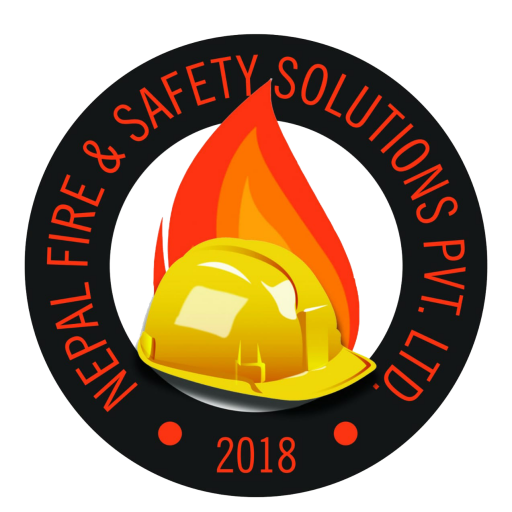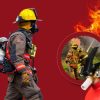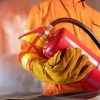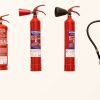How to Choose the Right Fire Extinguisher for Your Home or Business
Choosing the right fire extinguisher is critical for protecting lives and property. Whether you’re a homeowner in Brooklyn or managing a small business in Manhattan, understanding which extinguisher meets your specific needs can mean the difference between a minor incident and a catastrophic loss. This guide will walk you through every step—from identifying fire classes to complying with Fire Code—so you can make an informed, SEO-friendly choice.
1. Understand the Five Fire Classes
Every fire extinguisher is rated for one or more “classes” of fire. Matching the extinguisher to the type of fuel involved is the first and most important decision:
- Class A (Solids): Ordinary combustibles such as wood, paper, cloth, and plastics.
- Class B (Liquids/Gases): Flammable liquids like gasoline, paint, solvents, and cooking oils.
- Class C (Electrical): Energized electrical equipment—wiring, fuse boxes, appliances.
- Class D (Metals): Flammable metals (e.g., magnesium, sodium, titanium) found in some industrial settings.
- Class K (Kitchen): Cooking oils and fats—primarily for commercial kitchens.
Pro Tip: For most homes and small businesses, a multi-purpose 2A:10B:C dry chemical extinguisher covers Classes A, B, and C, making it the go-to choice.
2. Learn the Main Types of Fire Extinguishers
Once you know your fire class needs, select the right extinguisher type:
| Type | Description | Best For |
|---|---|---|
| Water (APW) | Pressurized water; cools Class A fires | Class A only |
| Foam | Smothers and cools; leaves a protective blanket | Class A & B |
| Dry Chemical (ABC) | Monoammonium phosphate; interrupts chemical reaction | Class A, B & C (multi-purpose) |
| Dry Chemical (BC) | Sodium bicarbonate; effective on flammable liquids & electrical | Class B & C |
| CO₂ | Displaces oxygen; no residue | Class B & C; electrical equip. |
| Clean Agent | Halotron® or FE-36; non-conductive, leaves no residue | Class A, B & C; sensitive equip. |
| Wet Chemical | Potassium acetate; forms soapy film over fats | Class K (kitchens) |
Alt text suggestion for any images: “Different types of fire extinguishers lined up.”
3. Pay Attention to Size & Rating
Fire extinguishers carry a UL rating such as 2A:10B:C:
- Number before “A” (e.g., 2A) refers to the water-equivalent capacity for Class A fires.
- Number before “B” (e.g., 10B) indicates the square footage it can cover for Class B fires.
- “C” simply means it’s safe on electrical fires (no numeric value).
Tip: A 5-lb. ABC extinguisher (2A:10B:C) is ideal for most homes and small offices.
4. Conduct a Risk Assessment
Evaluate your space to determine:
- Size of the area: Larger spaces may require multiple extinguishers or ones with higher ratings.
- Type of hazards: Kitchens, mechanical rooms, warehouses—each has unique fire risks.
- Occupant load: More people means quicker evacuation is critical; ensure extinguishers are easily accessible.
5. Placement & Installation Best Practices
- Mounting height: Extinguisher handles should be no more than 5 feet above the floor.
- Visibility: Keep units in plain sight, near exits or fire-risk areas (e.g., kitchen, furnace).
- Accessibility: Avoid behind doors or in closets—people must grab them fast.
6. Maintenance & Inspection
Following NFPA 10 (Standard for Portable Fire Extinguishers):
- Monthly visual checks: Ensure pressure gauge in the green, no corrosion, pin and tamper seal intact.
- Annual professional inspection: Certified technician checks mechanical parts, extinguishing agent, and expels any slack.
- Hydrostatic testing: Every 5–12 years (depending on type) to verify cylinder integrity.
7. Training & the PASS Technique
Even the best extinguisher is useless if no one knows how to use it. Train staff or family members on the PASS method:
- Pull the pin
- Aim low at the base of the fire
- Squeeze the handle
- Sweep side to side
Consider scheduling an annual drill or refresher course.
8. Special Considerations for Businesses
- Commercial kitchens: Invest in Class K wet chemical extinguishers near fryers and grills.
- Server rooms & data centers: Use clean-agent extinguishers to protect sensitive electronics.
- Warehouses & garages: You may need dedicated Class D units for metal-processing areas.
9. Frequently Asked Questions (FAQ)
Q: How many extinguishers does my home need?
A: At minimum, one on each level—near the kitchen, garage, and any utility rooms.
Q: Can I buy extinguishers online?
A: Yes, but ensure they’re UL-listed and from a reputable fire-safety supplier.
Q: What’s the lifespan of an extinguisher?
A: Most have a 5–15 year lifespan, based on type and hydrostatic test results.
10. Conclusion & Next Steps
Selecting the right fire extinguisher boils down to understanding your unique risks, matching the extinguisher’s class and type, and committing to regular maintenance. In New York City, adherence to FDNY-approved equipment and NFPA 10 standards ensures you’re not only protected but also compliant with local codes.
Ready to safeguard your space? Contact an FDNY-licensed fire equipment dealer for a site assessment and professional installation.
Stay safe, stay prepared, and keep the Big Apple burning bright—only in your memories!







3 thoughts on “How to Choose the Right Fire Extinguisher for Your Home or Business”
Lorem ipsum dolor sit amet, consectetur adipiscing elit, sed do eiusmod tempor incididunt ut labore et dolore magna aliqua. Quis ipsum suspendisse ultrices gravida. Risus commodo viverra maecenas accumsan lacus vel facilisis.
Lorem ipsum dolor sit amet, consectetur adipiscing elit, sed do eiusmod tempor incididunt ut labore et dolore magna aliqua. Quis ipsum suspendisse ultrices gravida. Risus commodo viverra maecenas accumsan lacus vel facilisis.
Lorem ipsum dolor sit amet, consectetur adipiscing elit, sed do eiusmod tempor incididunt ut labore et dolore magna aliqua. Quis ipsum suspendisse ultrices gravida. Risus commodo viverra maecenas accumsan lacus vel facilisis.s